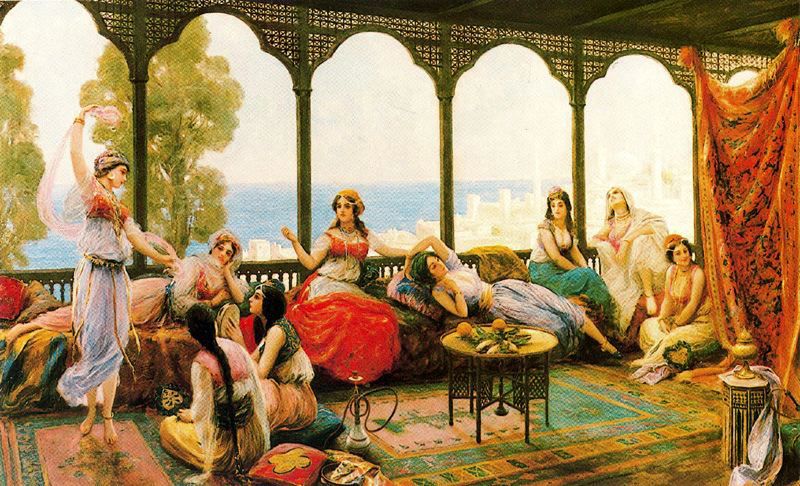
Origins
We talked about the reasons, more or less discussable, which prompted a Westerner who coined the term "belly dance", but the origin of the Arabic definition of this dance is still obscure: "Eastern" or "east", but compared who, what? Someone dares to be a cast from a simplistic Western definition, it is certain that the Westerners place everything that is coming from the Arab culture in a hypothetical "East" in "Arabian Nights" style; but what about the dance that is practiced, for example, in Morocco, a little ‘too west’ to be called Eastern by Europeans or Americans, but certainly in the East than in the U.S.?
We find ourselves once again facing a term coined by the Americans, pioneers in the West, big fans of this fascinating art form? And more likely that the term is very Arab and that, as shown by some sources, this dance actually came from the East, or India or, some say, from Mesopotamia, Egypt and brought in all the Maghreb ?? by ancient nomads.
Oriental dance has developed a dual nature since its inception: the esoteric and exoteric, that is reserved for a few secret ritual and social time. Probably his?? first movements, which bring to the elements, the seasons and the rhythms of life and the universe were born for ritual purposes and there were few professional dancers to perform on specific occasions such as births, marriages, feasts for circumcision, in short, in all the rites of passage rituals related to agriculture or to propitiate the fertility of the fields and women in the community.
The status of the dancer still oscillates between that of the old original one as a therapist, a reference point for women at every stage of life from puberty to old age and entertainer at parties, to be honest is not always honorable position. As the former it is undoubtedly the oldest, so that ethnologists detect traces even in some villages of Morocco, where the dancer acts as a helper of the mother, teaching her the movements that assists the child down into a hole especially dug in the ground in the center of the tent where the birth takes place. The woman, standing, supported by two assistants, surrounded by all the women of the village or her close relatives closer, makes a real dance made up of wide circles, undulations and shots of the abdominal muscles accompanied by special breathing that fits the rhythm of the chants and music, almost hypnotic, in a ritual that certainly helps the mother to control the pain of labor.
Today, we are trying to recover this important function of oriental dance in the West, with the emergence of numerous courses specially formulated for the preparation for childbirth. The basic movements of belly dance, performed without force, and gradually, certainly constitute an excellent preparation for any woman who wants to experience birth naturally without medicines. However, the ritual, social and therapeutic function of the oriental dance, today very little is left: the original dance has undergone a major transformation after meeting with Western culture, so that the oldest movements are no longer distinguisable from what is imported from other choreographic disciplines.
The great choreographers and dancers of the last two centuries have undoubtedly contributed to this profound transformation. Around 1930 a Lebanese woman named Badia Mansabny opened a nightclub in Cairo, the "Casino Opera" in the wake of Western cabarets. Since then Egypt became a beacon for the world of oriental dance, dictating the new trends in terms of costumes, music, performances and imposing the fame of its dancers, as Tahia Carioca and Samia Gamal, Naima Akef.
The dance then, came to the cinema, not only Egyptian (although Hollywood remained fascinated by that), adapting to new demands of the theaters, the stage and new audiences. This new type of dance in its artistic form superimposed on the many indigenous dances of each country, giving rise to a contamination and dilution of creative styles. Today belly dancing is diffused into two popular forms of classical Egyptian and folkloric style. Almost all Arab countries, not only in the Mediterranean, are enjoying a new season of glory in the West, turning from a choreographic framework to a real therapy overcoming psycho-somatic blockages that often afflict Western women. A sort of return to the origins of what may be called the "world's oldest dance."

